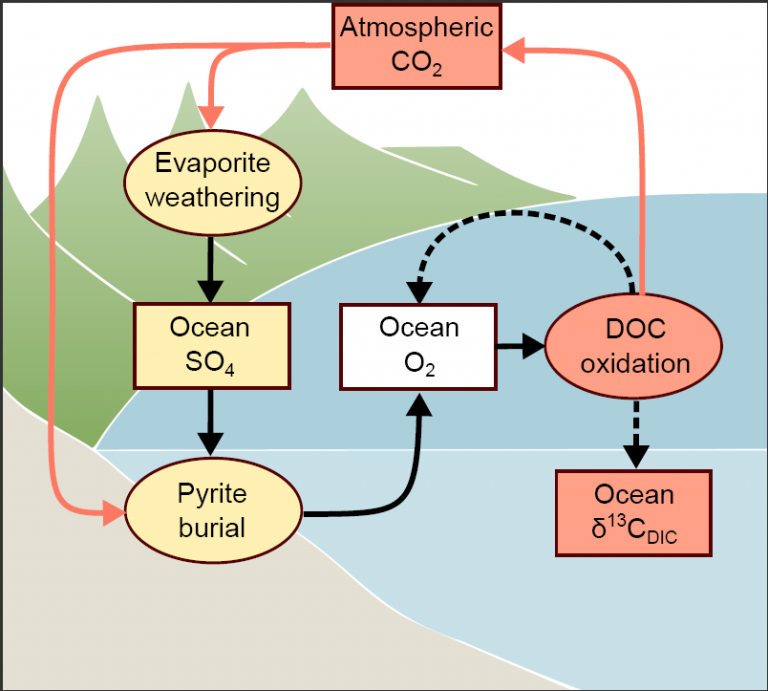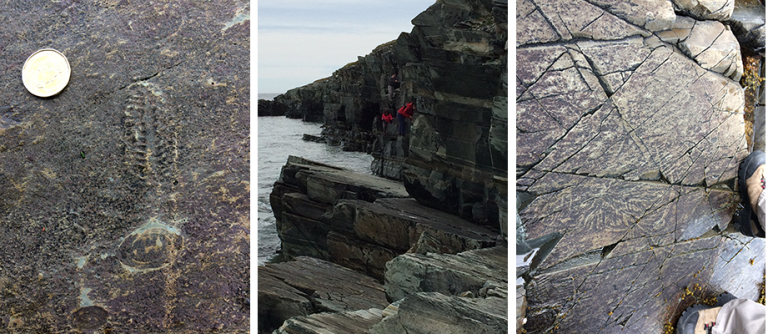Neoproterozoic carbon isotope excursions sustained by coupled evaporite dissolution & pyrite burial
6 September 2019
This new study, published in Nature Geoscience journal, contradicts the popular view that oceans became oxygenated through the action of animals, which the team say radiated ‘opportunistically’ during the late Ediacaran Period as oceans became progressively more oxygenated.

The earliest animal fossils known took the form of fronds rooted by disc-like holdfasts to the seafloor between about 575 and 555 Ma ago. Their fossilised impressions were famously first discovered by a Leicestershire school boy, Roger Mason, in 1957. Roger showed the fossils to local geologist Trevor Ford and later went on to lecture himself on geology at UCL until his retirement. The strangely quilted fossils show unique, fractal symmetries and may have used their exceptionally large surface areas to absorb nutrients directly from the turbid, organic-rich Ediacaran oceans.

A new UCL-led study has now looked at the relationship between these biological radiations and the increasing oxygenation of the oceans in the run up to the Cambrian explosion. The team discovered that massive tectonic collisions during the Ediacaran Period raised mountain chains containing long-buried water-soluble minerals rich in sulphate. As these eroded into the pre-Cambrian ocean, oxygen was released into the environment, allowing the first complex animals to both evolve and diversify. The oxygenation of the oceans paved the way to the evolution of new forms of more energetic, muscular animals, such as worms and arthropods, that could burrow, build skeletal armour and move purposefully through their environment. This new view contradicts the popular notion that oceans became oxygenated through the action of animals, which the team say radiated ‘opportunistically’ in waves throughout the Ediacaran-Cambrian transition interval.
Images:
- Figure 1. The boxes show quantities, the ovals show processes, the solid arrows show positive effects and the dashed arrows show negative effects in the sulfur cycle (yellow) and the carbon cycle (red). Increased sulfate dissolution results in more pyrite burial, which increases atmospheric and ocean O2. Resultant depletion of the DOC reservoir represents a negative feedback on ocean oxygenation, driving ocean δ13C lower. The red arrows show potential for positive feedback: DOC oxidation increases atmospheric CO2, surface temperature, precipitation and runoff, fuelling further evaporite dissolution and nutrient delivery.
- Rock formation from Newfoundland (same time interval as the Leicestershire fossils)
Relevant Links:
- Unique Neoproterozoic carbon isotope excursions sustained by coupled evaporite dissolution and pyrite burial. Nature Geoscience, (2019) Graham A. Shields, Benjamin J. W. Mills, Maoyan Zhu, Timothy D. Raub, Stuart J. Daines & Timothy M. Lenton. 10.1038/s41561-019-0434-3
- Prof Graham Shields' research profile
 Close
Close

